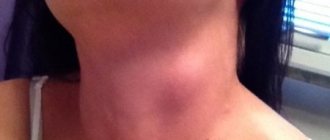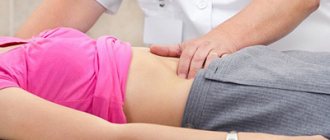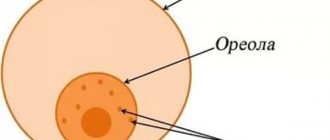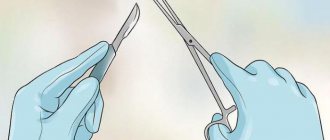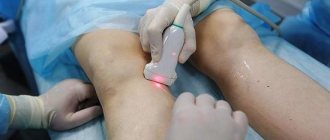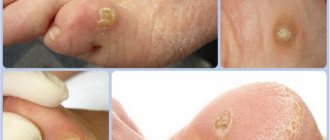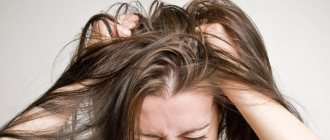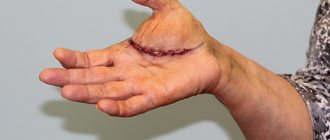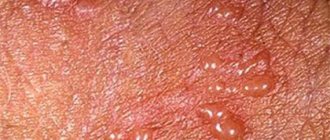A person’s face is the basis and indicator of his appearance, and any defect will be visible to others. In this regard, a person constantly strives to ensure that the skin of the face always looks flawless and the seals that appear under the skin cause close attention. A person is in greatest contact with the external environment, which puts him in a high-risk group. New skin growths in the facial area occur quite often, this is due to a number of reasons, and we will talk about them in this publication.
Conventionally, we can distinguish 3 main groups of skin tumors:
- benign neoplasms on the skin and dense formations: moles, papillomas, fibromas, lipomas, hemangiomas, atheromas, acne (including milia - white dots on the nose and other parts of the face);
- malignant formations on the skin and subcutaneous seals: sarcomas, basal cell carcinomas, melanomas;
- neoplasms and compactions with a high risk of developing oncology: senile keratomas, Bowen's dermatoses, xeroderma pigmentosum, cutaneous horns, diseases of general etiology with a tendency to develop pathological tissues.
Causes and types of subcutaneous seals in the form of balls
Depending on the cause of their appearance, bumps on the skin come in several types. You need to be able to distinguish between them in order to easily determine the seriousness of the situation. Lumps and lumps under the skin, regardless of type, cause headaches and malaise, sometimes even fever. Neoplasms can be single, but sometimes the number reaches several dozen.
Lipoma or wen
Lipoma is a common skin defect that consists of adipose tissue. The tumor is benign, soft and mobile on palpation. The boundaries are clear and do not differ in color from healthy skin. The cause is metabolic disorders in the body. Common locations are neck, head, back, armpits. Women are more likely to develop lipomas.
What is atheroma?
Atheroma is a small subcutaneous cyst in the form of a ball, which consists of sebum. It accumulates and stretches the sebaceous gland. The boundaries of the atheroma are clear and dense to the touch. If the skin of a lipoma gathers into a fold, then this is impossible to do with a cyst. The skin over the atheroma turns blue, a dot is visible in the center - a blocked excretory duct.
The size of the formations varies from 5 mm to 5 cm. The subcutaneous cyst does not hurt, but in case of infection, a breakthrough into the dermis and an abscess is possible.
The formations are localized under the skin on the face, back, and shoulders. When inflamed, the cysts fester. It is advisable to have the formation removed by a surgeon so as not to endure pain. Reasons that contribute to the appearance of atheroma:
- polluted environment;
- disturbances in the metabolic process of the human body.
Characteristics of hygroma
It is a dense small formation under the skin. Localized on the wrist, arm, palms. Does not cause pain in humans. Sometimes it gets in the way if the work involves active use of your hands. In case of severe mechanical injury, it can “dissolve”, because it consists of stagnant liquid. The causes of hygroma are injuries, consequences of surgery. Hygroma develops randomly: it can grow up to 2 cm in a couple of days, and sometimes it grows for years.
Nodules on the joints
Joint diseases such as arthritis, arthrosis, osteoarthritis provoke the appearance of immobile subcutaneous tubercles. A dense subcutaneous lump on the big toe refers to problems with the joints. The bone grows, deforming the finger. When walking, a person experiences pain, and difficulties arise with choosing shoes. The causes of the disease are injuries and old age.
Enlarged lymph nodes
Lymph nodes are soft balls measuring 1-2 cm in a calm state. Lymph nodes are located in the neck, under the arms and other areas of the body. When a person suffers from an infectious disease, sore throat, otitis media, the lymph nodes become enlarged and painful. Lymphadenitis is a purulent lesion of a lymph node. This disease is accompanied by acute pain and redness of the skin around the inflamed node. Urgent treatment with antibiotics or even removal of the affected lymph node is needed.
Papillomas and warts
Small skin protrusions in the form of bumps, spots, moles, and polyps affect people of all ages. These are painless growths that do not cause harm to humans. The cause is infection and hormonal imbalances. It is difficult to distinguish benign subcutaneous and cutaneous formations from cancer on your own, so at the first manifestations of growths you need to consult a dermatologist.
Other causes of seals
Small formations on the abdomen in the side are hernias. They appear on the site of post-operative scars, when lifting heavy weights. The internal organs of the abdomen are squeezed out and form a hernia. The fallen body can be put back inside. It is better to go to a specialist for this. Lumps and lumps on the skin of the genitals are the result of various viral and bacterial skin lesions, which are accompanied by blockage of the glands and hair follicles. A blue lump under the skin forms at the site of a foreign body (bullet, shrapnel) that is stuck in the body. The size of the foreign body determines the volume of the lump.
Malignant tumors
Statistically, cancerous tumors are rare. The table shows the main subcutaneous malignant lumps:
Malignant subcutaneous lumps are usually the result of complications in moles or lymph nodes.
First, a person feels a thickening of the skin, which gradually grows. You should immediately consult a specialist if the tumor:
- has unclear boundaries;
- growing rapidly;
- welded to the skin, immobile;
- bleeding.
Mole
A mole or birthmark is a pigmented formation on the skin that is congenital or acquired. They can be different in color (from red to black) and located: at the level of the skin, or rise above the surface of the skin. Most often found on the face. In most cases there is no danger. However, with periodic mechanical trauma (for example, when shaving) or increased sensitivity of human skin to ultraviolet radiation, they can degenerate into malignant skin tumors. In this case, there are indications for getting rid of the mole. They need to be removed in a timely manner to avoid dire consequences.
Causes of moles
Among the reasons for the formation of moles on the skin, the most common are the following:
- hereditary factor;
- ultraviolet radiation;
- hormonal imbalances;
- radioactive radiation;
- mechanical trauma.
Ways to remove moles
There are several methods for removing moles from human skin:
- laser removal;
- electrocoagulation (exposure to electric current);
- radiosurgery;
- surgical removal;
- conservative therapy.
You can watch the procedure for removing a mole using the radio wave method in the following video:
Localization of the lump and meaning
Based on the location of the subcutaneous lumps, initial conclusions about a possible disease can be made.
If the lump is located behind the ear, this indicates the following deviations:
- Enlarged lymph nodes. Children often suffer from infectious diseases that cause enlarged lymph nodes. Once the infection is treated, the lymph nodes will go away on their own.
- Pig or behind the ear. A disease in which a child's salivary glands become swollen. A lump forms on the cheek or earlobe. The disease threatens complications: infertility, pancreatitis. Therefore, a child diagnosed with mumps is prescribed diet and bed rest.
On the face, bumps form on the cheekbone, cheek, and nose. It is associated with acne, a skin infection. White lumps in the skin on the neck are wen, which indicates poor metabolism. Lymph nodes and subcutaneous cysts manifest themselves as lumps on the neck. Often parents discover a subcutaneous lump on the baby’s head. This is usually the result of an injury or fall. From injuries there are bumps on the head, buttocks, shins and forehead. There is nothing wrong with these formations.
One large subcutaneous pimple causes no less problems than small acne. Long ripening, pain, itching, conspicuous redness of the skin - you will learn how to get rid of these unpleasant symptoms from this article.
Atheroma
Atheromas are skin compactions, small bumps formed as a result of obstruction of the sebaceous glands. They look like white dots on the face or small flesh-colored bumps. Course of the disease: fever, inflammation, discharge of pus. In the absence of treatment, secondary atheromas are formed, characterized by larger sizes and increased pain. One of the causes of the disease is seborrhea. Of course, the question arises - how to get rid of white spots on the face? In this case, treatment of the body as a whole and the skin formation itself in particular is indicated. Moreover, treatment is recommended to be carried out in the early stages of the appearance of a lump, as this allows you to avoid cosmetic defects that sometimes remain when large atheromas are removed. It is advisable to get rid of white spots on the face in the early stages also for the reason that at this stage a laser can be used; in the later stages of the disease, the laser is ineffective, and surgical intervention is used.
Why do such acne appear?
Internal pimples differ from traditional acne not only in their appearance. The reasons for their appearance are also different. So, the appearance of a pimple-bump may be a consequence of hypothermia. Such inflammatory elements often occur on the buttocks and thighs.
Has a huge pimple appeared on your forehead like a bump? In this case, the reason is trivial - it is a blockage of the sebaceous duct. Such an inflammatory element takes a very long time to mature – sometimes it doesn’t take 2 weeks. The skin in this area may remain the same color as on healthy areas of the face, or it may acquire a bluish or burgundy tint.
In addition, the causes of internal acne on the body and face can be:
- decreased protective functions of the body (for example, after an illness);
- unhealthy diet with a predominance of fatty foods;
- infection entering the body (for example, through a scratch on the skin).
Milia
Milia are a type of acne that visually appear as white bumps on the skin or bumps that are hard to the touch. This defect is very popular and many people are interested in how to get rid of white spots on the face. The causes of white dots under the eyes are as follows: oily seborrhea, hyperkeratosis, hypovitaminosis. Important: removing white bumps by squeezing out milia does not bring the desired results, but only injures the skin and can provoke inflammatory processes. When deciding how to remove white spots under the eyes, you need to consult a specialist. Therapy for milia mainly comes down to opening the milia with a sterile needle or analog instruments, allowing for minimal tissue trauma, followed by removal of internal pus and fat. To get rid of white spots on the face, to permanently remove white formations, you need to contact a specialist in the field of aesthetic medicine. After therapy, white dots on the face do not leave scars or other defects, so you should not be afraid to get rid of white dots on the face.
How to get rid of it?
You can eliminate a pimple in the form of a lump using more humane methods:
- Seek help from a cosmetologist. In his arsenal there are many methods for treating subcutaneous inflammatory elements. If the pimple is “ripe,” the cosmetologist will squeeze it out under sterile conditions using special instruments. If not, you can try to speed up the resorption process, for example, using the Darsonval apparatus.
- Make homemade masks and bandages. To make the abscess resolve faster, apply a bandage with honey to the skin several times. Aloe juice draws out pus well. Apply the pulp of the plant to the pine cone and secure with a bandage. You can leave the bandage on overnight - there will be no harm.
- Cure with pharmaceutical drugs. In the pharmacy you will find a lot of inexpensive medicines that are used just to draw out the contents of ulcers. These include Vishnevsky ointment, famous since Soviet times, ichthyol ointment, “Levomekol” and others. You can buy a ready-made wound-healing dressing, for example, Branolind N, soaked in Peruvian balsam, or a chitosan dressing, Chitopran. They will speed up the removal of pus and promote faster healing of the skin. You can dry a pimple by treating it with calendula tincture, manganese solution or iodine. After 2-3 procedures it should begin to decrease in size.
- Change your skin care routine. Stop using foundation for a while to avoid clogging your pores even more. Thoroughly cleanse your skin in the morning and evening, and wipe it with special cosmetic wet wipes throughout the day to prevent dirt from getting into the pores.
- Cleanse the body from the inside. Since the appearance of subcutaneous pimples is often caused by poor nutrition, it makes sense to change your diet at least temporarily. Take a course of probiotics or brewer's yeast, eat more foods rich in fiber.
Ball-shaped lumps under the skin are common formations that can appear as lumps, tumors, or lumps. The formations in question do not pose a health threat.
- Show all
Medical indications
White bumps on the skin can appear on any part of the body: face, arms, legs, back. Benign formation in the initial stages goes unnoticed. There is no pain, and the formation grows slowly. The patient notices it when the formation becomes large.
If the lump under the skin shows signs of local inflammation, then pain and discomfort are felt, the local temperature rises, and the skin becomes redder. Additional disorders are also observed: weakness, general malaise, headache. These neoplasms arise against the background of infection. You can get rid of them if you undergo competent and timely treatment.
Lumps under the skin can be malignant growths, which are less common. They can be identified independently by external signs. In such cases, urgent medical attention is required. Often, nodules on the skin are a wen, which is harmless and arises from adipose tissue. This soft neoplasm has clear boundaries. Sometimes its surface may be bumpy. At the same time, the skin does not suffer any changes, maintaining its color and density. In this case, you can assemble the fold.
The usual place for the spine to form is on the hairy parts of the body. If the lipoma reaches a large size, it puts pressure on neighboring organs or muscles, which causes pain. Wen is often called atheroma. But atheroma is a cyst or sebaceous gland in a stretched state, which has a blocked excretory duct. Over time, the gland stretches.
On palpation, a dense round formation with clear boundaries is felt. Skin fused with atheroma does not fold. It changes color, and in the middle you can see a dot - this is a clogged duct. Inflammation or suppuration may occur. The main treatment for atheroma is surgical removal.
Lipoma
A lipoma (can be called a wen) is a benign lump under the skin, which is formed from connective tissue and can appear even in an absolutely healthy person. The main reasons for the appearance of such a lump are: heredity, metabolic disorders associated with blocking the pathways of fat breakdown. Such skin thickening does not pose a danger to life and health. Removal is recommended only for aesthetic reasons if the wen is large enough. Therapy is presented in two options: surgical removal by enucleation or the use of steroid injections that provoke the destruction of fatty tissue.
Other neoplasms
Sometimes a person may notice that they have a white lump under the skin on their leg or on another part of their body. This lump does not cause any pain or irritation. Sometimes there is cosmetic discomfort associated with its location. With a strong impact, it can burst and dissolve. But this is not dangerous, since fluid accumulates in the tendon.
If you have various diseases associated with joints, you may notice that a lump has appeared under the skin. It has the shape of a knot and is immobile. This growth is called a joint nodule. If they are on the elbow joint, they are called rheumatoid, and they are one of the symptoms of rheumatoid arthritis. Formations that are located on the extensor surface are Heberden's or Bouchard's nodes. Their presence indicates deforming osteoarthritis.
Gout causes nodules called tophi. These seals are composed of uric acid salts. Their presence can be noted in people who have had gout for a long time. Particular attention should be paid if lumps have formed on the body under the skin in the area of the thumb joint. They can lead to its deformation. This makes walking much more difficult, causing severe discomfort.
Homeopathic Solution
Homeopathic remedies, unlike traditional medicines, have a more gentle effect on the human body. This is especially important for such categories of people as pregnant women, children, and elderly people with weakened immune systems. They do not cause addiction or side effects. It should be remembered that the prescription of the drug and its dosage should be carried out by a qualified homeopathic doctor. To make an accurate choice, he must take into account how the disease manifests itself, where it is localized, how the person feels and how he behaves. The appearance of swelling on the right or left side can also be decisive for the choice of remedy.
Symptomatic homeopathic medicines to eliminate edema:
- Arsenicum album (Arsenicum album) is a homeopathic diuretic that can be used for swelling of the lower extremities and the whole body.
- Kalium carbonicum (Kalium carbonicum) is a diuretic of homeopathic origin, it is successfully prescribed for anemia; especially with swelling of the upper eyelids, including swelling between the eyebrows and eyelashes.
- Kalium iodatum (Kalium iodatum) - effective for general swelling of the body, if this swelling occurs through infiltration of connective tissue.
- Apis mellifica (Apis mellifica) - this component is used for local and general edema, a special focus is edema of cardiovascular origin.
- Arnica (Arnica) - the drug includes arnica flowers, has an anti-inflammatory, hemostatic effect and relieves swelling well.
- Lymphomyosot (Lymphomyosot) is a homotoxic drug that has anti-edema, anti-inflammatory, and lymphatic drainage effects.
source
Manifestation of hernia
A hernia is a soft bulge under the skin that occurs during heavy exertion. It disappears while lying down or during periods of calm. Basically, the hernia is localized in the navel area, on the inner surface of the thigh. When touched, a painful sensation occurs. During palpation, the hernia disappears.
Pathology may appear against the background of squeezing out an organ through weak spots in the abdominal wall. This occurs during increased intra-abdominal pressure, coughing, and heavy exertion. This is a dangerous phenomenon. Therefore, if you suspect a hernia, you should immediately see a doctor.
Lymphadenopathy is an enlargement of the lymph nodes, which can be caused by colds. Normally, the lymph nodes can be felt under the skin in the neck, under the collarbone, and knee. This is a small ball that has no adhesion to the skin. The lymphatic system is part of the immune system and is represented by a filter. It clears the fluid that is between the tissues from toxins and other harmful substances.
Enlarged lymph nodes can be noticed when bumps appear under the skin. When touching them, a person feels pain. This occurs in infectious diseases, in the presence of wounds and burns. If the symptoms described above occur, the underlying disease must be treated.
When the skin above the node turns red, this indicates possible suppuration of the lymph node. In this case, you should immediately consult a doctor. If the form is already running, an operation is assigned. For mild cases of the disease, antibiotics are indicated. When the compaction under the skin has a bumpy texture, the lymph node is affected by a malignant tumor. In this case, consultation with an oncologist is required.
Tumors under the eye, causes
A tumor under the eye has a cause, determined by its nature. For example, this is a likely reflection of diseases of the internal organs. We can list the following health problems that accompany a tumor under the eye.
Kidney diseases
In the initial stage of renal failure (a fairly severe disease, glomerulonephritis), swelling of the eyes occurs, observed on both sides, especially after a night's sleep.
Thyroid diseases
An underactive thyroid gland (hypothyroidism) often manifests as swelling-like swelling around the eyes. Sometimes this symptom can spread to the entire face. When palpated, the swelling turns out to be soft because it is filled with mucus inside.
Allergies to various factors
People suffering from hay fever (a seasonal reaction to pollen and plants) experience swollen eyes. This allergy occurs only during periods when its cause, the allergen, is present in the air. In addition to swelling of the eyes, sometimes significant, there is a runny nose and difficulty breathing.
Eye inflammation or infection
A disease in which infection affects the mucous membrane of the eye is called conjunctivitis. When the sebaceous gland under the eye becomes inflamed, stye occurs. Diagnosis of both conditions is not difficult during the development of these processes. The initial stages are a swelling under the eye with painful sensations. Seeing a doctor is recommended, but sometimes the patient himself knows how to deal with exacerbations. Tumor of the eyelid, treatment, how to remove the tumor, will be a clear case if you know the nature of the inflammation.
The infection is distinguished as viral and bacterial according to the type of pathogen. Inflammation of the conjunctiva can be caused by the herpes virus. The result is swelling under the eye, sometimes significant. The upper eyelid swells in most cases, which is accompanied by pain or tingling. Swelling under the eyes, causes and treatment require the following recommendations.
- Warm tea lotions made from fresh brew. They do not destroy the virus, but tone the skin, soothe itching, complementing the main treatment.
- Maintaining hygiene. It is necessary to exclude infection of other people in the family. Having penetrated the body in childhood, the virus appears with painful manifestations in weakened immunity.
- The use of immune strengthening agents: vitamins, especially C, rosehip extract.
- Use of antiviral drugs. The severity will subside only after 7 days, when interferon is produced in the body.
Bacterial infection is also serious. The cause of blepharitis or stye is Staphylococcus aureus, the causative agent. Antibiotics are required: erythromycin or tetracycline, which can be taken if there are no allergic reactions. A tumor under the eyes, the causes and treatment of which is associated with infection, and also requires the organization of a correct lifestyle.
Trauma, mechanical impact
The damage usually occurs accidentally, causing the eye and its surrounding area to swell significantly. This is a consequence of soft tissue swelling. Such cases are always accompanied by another sign - a hematoma or bruise.
Oncological disease
Found in the immediate vicinity of the eye, it is considered a rare pathology. But the number of such patients tends to increase, including children. It is necessary to consult a doctor as soon as possible so that the disease does not progress to an advanced stage, at which a cure is not predicted. There are several causes of cancer under (or near) the eye. Their consideration will also help to identify risk factors against which prevention is necessary.
Other options
Other bumps may appear on the body, which have different shapes, sizes and colors. They have different names: wart, condyloma, papilloma. They can be either benign or malignant.
The reasons that lead to their occurrence are different: viral infections, disorders in hormonal regulation, mechanical injuries. Warts and papilloma can appear without a reason. They can be localized on any part of the body and even on the nose. Most of them are a harmless growth that causes only visual discomfort. But since their shape and size are varied, it is impossible to visually distinguish simple growths from malignant formations. Therefore, in such cases, consultation with a dermatologist is required.
A woman may develop subcutaneous lumps in her breasts. This is related to the menstrual cycle. In the second phase of the cycle, under the influence of hormones, physiological changes occur in the mammary glands, which end with menstruation.
If the inflammation under the skin does not end with the menstrual cycle, you should consult a gynecologist. He must examine the breast and prescribe appropriate treatment. Most often, lumps in the chest are not dangerous, but sometimes they are recommended to be removed or treated conservatively.
Reasons why people need urgent medical consultation:
- the presence of large lymph nodes found in the armpits;
- unexplained discharge appears from the nipple;
- the presence of pimples with uneven outlines;
- tenderness of the mammary glands not during menstruation;
- deformation of the skin over the inflamed lymph node;
- very high rate of lymph node growth.
If the above-described phenomena occur, an urgent consultation with a mammologist, gynecologist, or oncologist is required.
Hemangioma
Hemangioma is a skin growth (red bumps, often irregular in shape, similar to moles) that can be either hereditary or acquired. Hereditary hemangiomas usually appear in infancy and go away on their own over time. Acquired hemangiomas are associated with intoxication of the body and the inability of the liver to cope with toxins. There are almost no such growths on the skin of the face. If such formations nevertheless appear on the face, therapy is recommended, since mechanical damage may result in severe bleeding. Choose conservative treatment using a special drug or removal by chemical, electrical or surgical methods.
Skin ulcers
Sometimes purulent accumulations appear under the skin on the forearm and throughout the body. In this case, there is no infection. The cause of suppuration may be the bacterium staphylococcus. When affected, the skin turns red and swells. Bumps are localized on the face, nose, neck, stomach and back. A general increase in body temperature and local pain may be noticed.
Unlike other formations, malignant ones appear in rare cases. In the first stages, the patient does not hurt anything, there is no scabies. The formation is presented in the form of a nodule or compaction that is rapidly developing.
Main signs of a tumor:
Various tumors can arise from normal formations (birthmark). When a tumor is suspected, the help of an oncologist is required. Diagnosis is based on a history and careful examination of the patient. It is necessary to find out when and under what circumstances the skin tubercle appeared, which led to its appearance.
The treatment prescribed by the doctor depends on the cause of the disease. Therapy is often carried out in a hospital setting. Persons in whose body an infectious process is occurring take antibiotics and drugs that strengthen the immune system. If the tumor is malignant, it must be removed surgically.
The effectiveness of therapy depends on the period of detection of the compaction. If indicated, the doctor removes a simple wen. But with surgical treatment there is a risk of relapse or rapid spread of the tumor throughout the body.
Modern medicine helps eliminate the tumor by administering a special medicine. Under its influence, resorption of the neoplasm is observed. Treatment of any lump under the skin depends on the etiology and complexity of the disease.
General information
Subcutaneous lumps can occur spontaneously, for example, due to infectious diseases or inflammation of the lymph nodes, or from a blow. Numerous irregularities and bumps on the skin, as well as isolated ones, can occur. Infections, tumors, or the body's reaction to injury or damage can all cause swelling, lumps, or lumps on or under the skin.
Depending on the cause, the bumps may vary in size and feel hard or soft to the touch. The skin may appear red or ulcerated on the lump. Lumps may be painful or painless, depending on the cause of the injury.
Causes
There are many reasons for the appearance of various bumps on the skin and they are all directly related to skin diseases:
- Lipoma (benign tumor of adipose tissue). The lump can be any size (from a few millimeters to several centimeters). Usually painless, no change in skin color, firm to the touch.
- Mole. The lump on the skin is soft, brown or black, absolutely painless.
- Skin cancer. A lump or lump can occur in various places on the body, have a different color (from normal to dark), and is fused to the skin and surrounding tissues. Accompanied by pain and suppuration in the later stages of its development.
- Enlarged lymph nodes. The lump is located above the underlying lymph nodes, dense and hot to the touch, painful, the size of a pea to a walnut, not fused with the surrounding tissues. Combined with the presence of infection in the body (fever, intoxication).
- The cyst is intradermal. Formation of various sizes, usually of dense consistency, with unchanged skin color. Periodically it can become inflamed, even with the contents coming out.
- Skin abscess. The lump is dense and painful, the skin over it is red and hot, and there is pus inside. Combined with an increase in body temperature.
- Hemangioma. It is a red lump, soft or dense in consistency, painless.
- Warts. They are bumps or nodules of different sizes, painless or slightly painful. The skin over them may retain its natural color or acquire red tones.
- Malignant tumors of superficial structures. These formations include basal cell carcinoma, soft tissue sarcoma, neurofibromatosis, etc. Lumps and lumps can range from several millimeters to tens of centimeters. At the beginning of the disease, they are painless and do not cause much concern for the patient. Later they can become inflamed and decompose.
- Presence of foreign bodies. These are all kinds of fragments, bullets and other objects. In this case, the lump depends on the size of the foreign body, and is often painful.
- Rheumatoid nodules. They are lumps on the skin that do not manifest themselves at all. However, in addition to this, pain and deformation of the joints can be detected.
Subcutaneous pimple is a problem that plagues 80% of people. You can get rid of it using pharmaceutical products or at home. But at the same time, it is necessary to comply with certain conditions and strictly follow the recommendations.
A subcutaneous pimple is a common problem that affects 80% of young people and 40% of older people; it can look like a lump and is difficult to get rid of.
There are many reasons for this, one of them is an increase in the level of androgens (male sex hormones). They stimulate the active functioning of the sebaceous glands, which in turn clogs the pores, creating a fertile environment for bacteria.
In such an environment, inflammation matures quite quickly. Dead skin cells clog the passage for the sebaceous glands, and the infected area thickens and a subcutaneous pimple appears.
Papilloma
Papillomas are skin tumors of various types and shapes that are of viral origin. They are provoked by the presence in the human body of one of 27 types of viruses, generalized into a group called “human papillomaviruses”. These skin neoplasms appear in the form of warts of various types and shapes, visually represented by growths on the skin (they do not contain pus). They can appear on various parts of the skin and mucous membranes: on the face, on the hand, on the genitals, in the mouth, and so on. Penetration of the virus into the body occurs through mucous membranes or damage to the skin (a household route of infection through common objects or contamination from dirty hands is possible).
Therapy for human papillomavirus
To date, there is no therapeutic regimen that promotes complete cure. However, when papillomas are widespread throughout the skin, it is recommended to use immunomodulatory drugs. Single papillomas are recommended for removal for aesthetic and therapeutic purposes. For removal, a method of surgical intervention (laser, scalpel) or a destruction method is used, which provokes the death of the wart and its gradual falling off.
Helping the maturation of subcutaneous pimples
Most often, it is those with oily skin who are prone to acne.
, but internal pimple is very insidious and appears on any skin type.
When a red bump has formed on the body, pressure on which is accompanied by painful sensations, this is a pimple bump. Most often, acne is a consequence of hormonal imbalance or a cold.
How does a pimple bump develop?
Many microorganisms live quite quietly on the surface of the epidermis. Various factors (hormonal, disruption, stress and much more) turn bacteria into harmful pests that penetrate the ducts of the sebaceous glands, where they multiply at an accelerated rate. As a result, the lump increases and causes additional discomfort and pain.
Treatment of a subcutaneous formation is complicated by the fact that it matures, but cannot break through.
Squeezing out the formation is prohibited, as the infection will spread to adjacent tissues and the result will be scars on the skin.
Fibroma
Fibromas are skin tumors that, under the influence of internal or external factors leading to weakened immunity, manifest themselves in the form of a benign tumor of small or medium size, growing from fibrous tissue (does not contain pus). The etiology of fibroma is not fully understood, since growth can be provoked by various factors: stressful conditions, hormonal imbalances, and so on. This lump does not pose any danger and is recommended for removal only as part of aesthetic practice. The most important thing is to use a laser or scalpel to remove the formation. The likelihood of relapse is minimal.
Treatment of acne bumps in a beauty salon
In cosmetology, the following procedures will help cure problem skin:
Ozone therapy
- saturates the skin with oxygen;
- cleanses clogged pores;
- relieves swelling and pain;
- destroys pathogenic organisms.
Elos technology
- eliminates the inflammatory process;
- tightens enlarged pores;
- accelerates skin regeneration.
Peeling with fruit acids (laser therapy, dermabrasion)
- Eliminates the layer of keratinized cells, facilitating access of cosmetics and oxygen to the skin.
- The treatment process will be more fruitful if you provide the body with proper hygiene
, refusing to apply decorative cosmetics to the affected areas.
Treatment of acne bumps with pharmaceutical products
An effective and inexpensive remedy
, which helps in the fight against subcutaneous acne,
is not difficult to purchase at the pharmacy
. Let's look at people-tested drugs in the fight against tumors.
Ointments and creams
An ointment that gets rid of subcutaneous acne can be inexpensive and effective.
The most common ointments:
Salicylic ointment
It is based on salicylic acid, since it is the active ingredient in the fight against acne. The ointment effectively dries out acne and speeds up the healing process.
Apply the product directly to the site of inflammation. Another advantage is that it whitens the skin, thereby eliminating acne spots.
Heparin ointment
Heparin sodium eliminates inflammation and acts as a local analgesic. At the same time, it also has an antibacterial effect.
Zenerite
A drug in the fight against acne. To obtain the ointment, you need to mix the powder and solvent; they are sold as a set. The composition of the ointment is completely safe and also contains an antibiotic.
Baziron
Disinfecting ointment that destroys bacteria. The drug has a keratolytic and moisturizing effect.
Calendula ointment
It is made on the basis of calendula, gently affecting the skin, it completely removes spots and scars after acne. It also contains petroleum jelly, which dilates pores and, as a result, new formations do not appear on the skin. Calendula ointment helps with deep inflammations, as it perfectly stops the outbreak.
Retinoic ointment
Used for oily skin. In addition, it has antiseptic properties. But most often the ointment is used to eliminate acne.
Tetracycline ointment
It contains tetracycline, which has antibacterial agents. Apply the drug directly to the entire skin in a thin layer.
Syntomycin ointment
Syntomycin ointment is a universal disinfectant that effectively eliminates the inflammatory process. But, the dosage is important here; before each new layer of ointment, it is necessary to eliminate the previous one.
Birch tar
It will help speed up ripening within a day, but the smell will not be the most pleasant. The closer the acne is to the surface, the faster it will resolve.
- a pea of the drug is applied to a cotton swab and the source of inflammation is sealed;
- after half an hour the procedure is repeated.
Syntomycin ointment
It is applied locally to the site of inflammation. The result will be visible after numerous repetitions of the procedure.
Sulfuric ointment
An affordable and effective remedy that helps draw out the contents of blackheads.
Vishnevsky ointment
Drains pus from the wound. The smell is not the most pleasant, but the result will pleasantly surprise you.
Ichthyol ointment
Used in the same way as Vishnevsky ointment. There is a common belief that iodine destroys acne. It is not true. You will burn acne just like your skin and as a result you can get burned.
Hormonal ointments for acne on the face
- Triderm;
- Sinaflan.
You should not use these drugs on your own; there are many side effects. Consulting a doctor will protect you.
Drying tinctures and solutions
A subcutaneous pimple bump can become a real problem; drying tinctures will help get rid of it:
Alcohol solution of calendula
White subcutaneous acne on the face can be a big problem
, if you don't get rid of them.
An alcohol solution of calendula and aspirin will help in the fight
. It will not only relieve inflammation, but also help heal the skin.
Mix two aspirin tablets with aloe juice, apply the mixture to the skin, wait 15 minutes and rinse.
Salicylic or medical alcohol (1-2%)
Treatment of the affected areas is carried out several times a day.
Tar soap
Perfectly relieves inflammation and dries out the skin. Tar soap is based on birch tar, which has strong disinfectant properties.
Aloe
It is aloe that will help eliminate the internal pimple on the forehead, which feels like a bump. A freshly picked aloe leaf is cut in half, the area of inflammation is wiped with an aloe leaf.
Recipes for subcutaneous acne at home
Subcutaneous acne is very painful; home recipes will help treat them:
Steam baths
- chamomile;
- calendula;
- celandine;
- mint.
The herbs are poured with boiling water, then the face is placed in front of the container, and the head is covered with a towel. This procedure will help cleanse the pores, relieve inflammation in the deepest layers of the skin and prevent the formation of new inflammations.
Herbal decoctions and lotions will help eliminate subcutaneous acne at home. Tea tree oil is added to the decoctions. It is a strong natural antibiotic
, destroying infection even in the deepest layers of the skin.
Masks for subcutaneous acne
- With calendula
- blue clay - 15 grams;
- milk - 50 ml;
- alcoholic infusion of calendula - 10 ml;
- lemon juice -5 ml.
Mix all the ingredients and apply to the face, leave for 15 minutes.
- Yeast mask
- dry yeast - 10 grams;
- milk - 50 grams;
- honey - 10 ml;
- starch - 20 grams.
Warm milk is poured into the yeast and left until it swells completely. The next step is to add liquid honey and a little starch. 10 minutes is enough, after which the mask can be washed off.
Homemade masks will help get rid of subcutaneous acne on any part of the body, including the chin.
Risks and possible consequences of treatment
The most dangerous subcutaneous pimple is the one that looks like a lump, since improper treatment will stimulate the rapid spread of infection throughout the body
. The regeneration process will take many weeks.
If it worsens, the pus will be removed surgically. A blue pigment spot or scar will remain at the site of formation.
You should not try to pierce the acne with a needle and squeeze out the pus; this will not end well. If the entire subcutaneous pimple has been punctured, and a lump has formed in its place, it should be treated with an antiseptic and the abscess should be lubricated with drugs: Dalatsin or Klindovit.
Oncological diseases - tumors under the eye
Doctors do not yet know the exact reasons for the development of tumors under the eye or in the area of the organ of vision. We can only list the factors that provoke the process. This is both a hereditary disposition and negative situations. Perennial swelling from a black eye is a consequence of injury. You can also name a number of other provoking situations.
- Harmful production, heavy load on the organs of vision.
- Bad habits, smoking.
- An environment with harmful factors is a bad ecology.
- Chronic eye inflammation.
So long-term swelling from a black eye is not the only causative case. Factors that weaken the immune system may be added to injury or heredity. Ultraviolet radiation can be harmful, especially in old age. It is important to wear sunglasses if the skin around your eyes is weak. Another factor is HIV infection, as well as the spread of metastases to the eyes from other organs affected by cancer.
Prevention of subcutaneous acne
Diet
A balanced diet is an important component of acne prevention.
Reduce your consumption of the following foods:
- fried foods;
- salty;
- fast food;
- carbonated drinks.
Drinking green tea and walking outside will reduce the risk of developing subcutaneous lesions.
Choosing the right clothes
Cotton clothing will not help remove a subcutaneous pimple, but it can completely reduce the risk of its appearance.
. You should avoid dense synthetic fabrics that do not allow the skin to breathe.
Hygiene measures
Acne-prone skin requires daily care. Cosmetologists advise choosing hygiene products that suit your skin type.
Any problems and malfunctions in the body are reflected in the appearance of the skin. If acne appears frequently and external treatment does not help, it is necessary to undergo examination by an endocrinologist or gastroenterologist.
